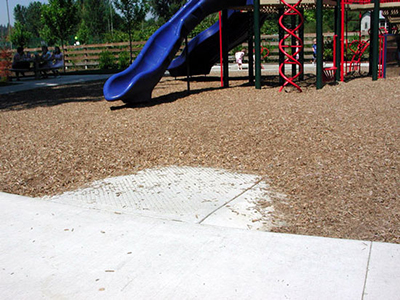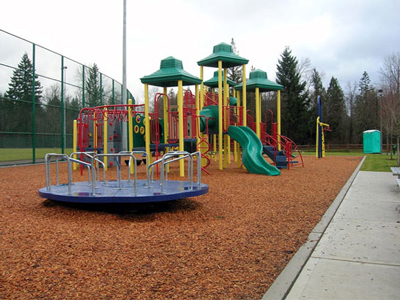- Need a firm, stable outdoor route of travel, at least forty-four inches wide, to the edge or surface and associated elements including viewing and playing areas.
- Need to have accessible equipment by reputable manufacturer installed correctly.
- Need accessible surfacing (meeting ASTM F-1951-99 standard) to all accessible, ground-level components and parts of the play structure as defined in the Access Board Recreation Playground Rules.
- Accessible surfacing to the whole play structure and accompanying areas is preferred, including entry points from surrounding area to the play equipment area. This is necessary for social and physical integration.
- Accessible equipment and number of elevated components determine whether you will need a transfer platform or ramp. Access to all equipment, including using ramps instead of transfer platforms, may be preferred for elevated features.
- When using engineered loose fill material, curb cut style ramps into the play area provide an accessible route even when the material compresses and leaves an edge or drop off.
More Information
- U.S. Department of Justice’s Americans with Disabilities Act (2010) Standards for Accessible Design
- Washington Administrative Code 51-50-1101
Examples
Redmond’s Perrigo Park
Photograph shows ramp going into engineered wood fiber surfacing, which reduces the chance that a drop-off will occur once the fiber surfacing settles.

Kent Service Club
This photograph shows the loose fill of the playground level with the sidewalk, creating easy access.
